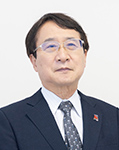Synthetic naphthoquinone derivatives suppressed nitric oxide and prostaglandin E2 production
Vol 7, Issue 2, 2023
VIEWS - 2612 (Abstract)
Abstract
Objectives: To synthesize and evaluate the anti-inflammatory potential of fifteen naphthoquinones (NQs), determining their ability to inhibitory nitric oxide (NO•) and prostaglandin E2 (PGE2) production. Methods: NQs were screened for their inhibitory effect on NO• and PGE production using LPS-activated RAW 264.7 macrophages. Results: Three linear furanonaphthoquinones (4-6) were identified as potent inhibitors of NO• and PGE2 production, with IC50 values ranging from 0.45 to 2.86 μM (NO•) and 0.38 to 1.65 (PGE2), highlighting the potent activity showed by compound 5 with IC50 values lower than one and high selectivity indices. Conclusions: Synthesized furanonaphthoquinones constitute leading compounds for the design of new anti-inflammatory agents and provide a valuable tool for designing new NQs that might be useful to treat inflammation. The evaluation of compounds 4-6 using in vivo models is warranted.
Keywords
Full Text:
PDFReferences
- Apostolova E, Lukova P, Baldzhieva A, et al. Immunomodulatory and anti-inflammatory effects of fucoidan: A review. Polymers 2020; 12(10): 2338. doi: 10.3390/polym12102338
- Bachmann MC, Bellalta S, Basoalto R, et al. The challenge by multiple environmental and biological factors induce inflammation in aging: Their role in the promotion of chronic disease. Frontiers in Immunology 2020; 11: 570083. doi: 10.3389/fimmu.2020.570083
- Chen S, Saeed AFUH, Liu Q, et al. Macrophages in immunoregulation and therapeutics. Signal Transduction and Targeted Therapy 2023; 8(1): 207. doi: 10.1038/s41392-023-01452-1
- Licá ICL, Frazão GCCG, Nogueira RA, et al. Immunological mechanisms involved in macrophage activation and polarization in schistosomiasis. Parasitology 2023; 150(5): 401–415. doi: 10.1017/S0031182023000021
- Durán AG, Chinchilla N, Simonet AM, et al. Biological activity of naphthoquinones derivatives in the search of anticancer lead compounds. Toxins 2023; 15(5): 348. doi: 10.3390/toxins15050348
- De Moura KCG, Emery FS, Neves-Pinto C, et al. Trypanocidal activity of isolated naphthoquinones from Tabebuia and some heterocyclic derivatives: a review from an interdisciplinary study. Journal of the Brazilian Chemical Society 2001; 12(3): 325–338. doi: 10.1590/S0103-50532001000300003
- Wellington KW. Understanding cancer and the anticancer activities of naphthoquinones—A review. RSC Advances 2015; 5(26): 20309–20338. doi: 10.1039/C4RA13547D
- Pinto AV, de Castro SL. The trypanocidal activity of naphthoquinones: A review. Molecules 2009; 14(11): 4570–4590. doi: 10.3390/molecules14114570
- Kumagai Y, Shinkai Y, Miura T, Cho AK. The chemical biology of naphthoquinones and its environmental implications. Annual Review of Pharmacology and Toxicology 2012; 52: 221–247. doi: 10.1146/annurev-pharmtox-010611-134517
- Dong M, Liu D, Li YH, et al. Naphthoquinones from Onosma paniculatum with potential anti-inflammatory activity. Planta Medica 2017; 83(7): 631–635. doi: 10.1055/s-0042-120545
- Kozlovskiy SA, Pislyagin EA, Menchinskaya ES, et al. Anti-inflammatory activity of 1,4-Naphthoquinones blocking P2X7 purinergic receptors in RAW 264.7 macrophage cells. Toxins 2023; 15(1): 47. doi: 10.3390/toxins15010047
- Takano A, Hashimoto K, Ogawa M, et al. Tumor-specific cytotoxicity and type of cell death induced by naphtho [2, 3-b] furan-4, 9-diones and related compounds in human tumor cell lines: Relationship to electronic structure. Anticancer Research 2009; 29(1): 455–464.
- Gach K, Modranka J, Szymański J, et al. Anticancer properties of new synthetic hybrid molecules combining naphtho[2,3-b]furan-4, 9-dione or benzo [f] indole-4, 9-dione motif with phosphonate subunit. European Journal of Medicinal Chemistry 2016; 120: 51–63. doi: 10.1016/j.ejmech.2016.05.002
- Park HJ, Lee HJ, Lee EJ, et al. Cytotoxicity and DNA topoisomerase inhibitory activity of benz [f] indole-4, 9-dione analogs. Bioscience, Biotechnology, and Biochemistry 2003; 67(9): 1944–1949. doi: 10.1271/bbb.67.1944
- Tanaka S, Nishiumi S, Nishida M, et al. Vitamin K3 attenuates lipopolysaccharide‐induced acute lung injury through inhibition of nuclear factor‐κB activation. Clinical and Experimental Immunology 2010; 160(2): 283–292. doi: 10.1111/j.1365-2249.2009.04083.x
- Min-Hee K, Shin HM, Lee YR, et al. Suppressive effects of furonaphthoquinone NFD-37 on the production of lipopolysaccharide-inducible inflammatory mediators in macrophages RAW 264.7. Archives of Pharmacal Research 2005; 28(10): 1170–1176. doi: 10.1007/BF02972982
- Mahmoud IS, Hatmal MM, Abuarqoub D, et al. 1,4-Naphthoquinone is a potent inhibitor of IRAK1 kinases and the production of inflammatory cytokines in THP-1 differentiated macrophages. ACS Omega 2021; 6(39): 25299–25310. doi: 10.1021/acsomega.1c03081
- Santos KT, Florenzano J, Rodrigues L, et al. Early postnatal, but not late, exposure to chemical ambient pollutant 1,2-naphthoquinone increases susceptibility to pulmonary allergic inflammation at adulthood. Archives of Toxicology 2014; 88(8): 1589–1605. doi: 10.1007/s00204-014-1212-z
- Liu SH, Tzeng HP, Kuo ML, Lin‐Shiau SY. Inhibition of inducible nitric oxide synthase by β‐lapachone in rat alveolar macrophages and aorta. British Journal of Pharmacology 1999; 126(3): 746–750. doi: 10.1038/sj.bjp.0702341
- Chen YR, Tseng CH, Chen YL, et al. Discovery of Benzo [f] indole-4,9-dione derivatives as new types of anti-inflammatory agents. International Journal of Molecular Sciences 2015; 16(3): 6532–6544. doi: 10.3390/ijms16036532
- Huang GJ, Deng JS, Liao JC, et al. Inducible nitric oxide synthase and cyclooxygenase-2 participate in anti-inflammatory activity of imperatorin from Glehnia littoralis. Journal of Agricultural and Food Chemistry 2012; 60(7): 1673–1681. doi: 10.1021/jf204297e
- Acuña J, Piermattey J, Caro D, et al. Synthesis, anti-proliferative activity evaluation and 3D-QSAR study of naphthoquinone derivatives as potential anti-colorectal cancer agents. Molecules 2018; 23(1): 186. doi: 10.3390/molecules23010186
- Hooker SC. Condensation of aldehydes with β-hydroxy-α-naphthoquinone. Synthesis of hydrolapachol1,2. Journal of the American Chemical Society 1936; 58(7): 1163–1167. doi: 10.1021/ja01298a028
- Dudley KH, Miller HW. Mercuric acetate oxidation of isolapachol. The Journal of Organic Chemistry 1967; 32(7): 2341–2344. doi: 10.1021/jo01282a054
- Mosmann T. Rapid colorimetric assay for cellular growth and survival: Application to proliferation and cytotoxicity assays. Journal of Immunological Methods 1983; 65(1): 55–63. doi: 10.1016/0022-1759(83)90303-4
- Green LC, Wagner DA, Glogowski J, et al. Analysis of nitrate, nitrite, and [15N] nitrate in biological fluids. Analytical Biochemistry 1982; 126(1): 131–138. doi: 10.1016/0003-2697(82)90118-X
- de la Puerta R, Domı́nguez MEM, Ruı́z-Gutı́errez V, et al. Effects of virgin olive oil phenolics on scavenging of reactive nitrogen species and upon nitrergic neurotransmission. Life Sciences 2001; 69(10): 1213–1222. doi: 10.1016/s0024-3205(01)01218-8
- Nagabhushana KS, Ameer F, Green IR. Condensation products between caproaldehyde and 2-hydroxy-1, 4-naphthoquinone. Synthetic Communications 2001; 31(5): 719–724. doi: 10.1081/SCC-100103261
- Hayashi T, Smith FT, Lee KH. Antitumor agents. 89. Psychorubrin, a new cytotoxic naphthoquinone from Psychotria rubra and its structure-activity relationships. Journal of Medicinal Chemistry 1987; 30(11): 2005–2008. doi: 10.1021/jm00394a013
- Ameer F, Giles RGF, Green IR, Nagabhushana KS. The DDQ mediated cyclization products of some 2-hydroxy-3-(1′-alkenyl)-1, 4-naphthoquinones. Synthetic Communications 2002; 32(3): 369–380. doi: 10.1081/SCC-120002120
- Kobayashi K, Shimizu H, Sasaki A, Suginome H. Photoinduced molecular transformations. 140. New one-step general synthesis of naphtho [2, 3-b] furan-4, 9-diones and their 2, 3-dihydro derivatives by the regioselective [3+2] photoaddition of 2-hydroxy-1,4-naphthoquinones with various Alkynes and Alkenes. The Journal of Organic Chemistry 1993; 58(17): 4614–4618. doi: 10.1021/jo00069a023
- Kiani AK, Bonetti G, Medori MC, et al. Dietary supplements for improving nitric-oxide synthesis. Journal of Preventive Medicine and Hygiene 2022; 63(2 Suppl 3): E239–E245. doi: 10.15167/2421-4248/jpmh2022.63.2S3.2766
- Saini R, Singh S. Inducible nitric oxide synthase: An asset to neutrophils. Journal of Leukocyte Biology 2019; 105(1): 49–61. doi: 10.1002/JLB.4RU0418-161R
- Tinker AC, Wallace AV. Selective inhibitors of inducible nitric oxide synthase: Potential agents for the treatment of inflammatory diseases? Current Topics in Medicinal Chemistry 2006; 6(2): 77–92. doi: 10.2174/156802606775270297
- Yeo J, Lee YM, Lee J, et al. Nitric oxide-scavenging nanogel for treating rheumatoid arthritis. Nano Letters 2019; 19(10): 6716–6724. doi: 10.1021/acs.nanolett.9b00496
- Pinho BR, Sousa C, Valentão P, Andrade BP. Is nitric oxide decrease observed with naphthoquinones in LPS stimulated RAW 264.7 macrophages a beneficial property? PLoS One 2011; 6(8): e24098. doi: 10.1371/journal.pone.0024098
- Sumi D, Akimori M, Inoue KI, et al. 1, 2-Naphthoquinone suppresses lipopolysaccharide-dependent activation of IKKβ/NF-κB/NO signaling: An alternative mechanism for the disturbance of inducible NO synthase-catalyzed NO formation. The Journal of Toxicological Sciences 2010; 35(6): 891–898. doi: 10.2131/jts.35.891
- Yoshida LS, Kawada T, Irie K, et al. Shikonin directly inhibits nitric oxide synthases: Possible targets that affect thoracic aorta relaxation response and nitric oxide release from RAW 264.7 macrophages. Journal of Pharmacological Sciences 2010; 112(3): 343–351. doi: 10.1254/jphs.09340fp
- Kongkathip N, Kongkathip B, Siripong P, et al. Potent antitumor activity of synthetic 1,2-naphthoquinones and 1,4-naphthoquinones. Bioorganic & Medicinal Chemistry 2003; 11(14): 3179–3191. doi: 10.1016/s0968-0896(03)00226-8
- Hughes FJ, Buttery LDK, Hukkanen MVJ, et al. Cytokine-induced prostaglandin E2 synthesis and cyclooxygenase-2 activity are regulated both by a nitric oxide-dependent and-independent mechanism in rat osteoblasts in vitro. Journal of Biological Chemistry 1999; 274(3): 1776–1782. doi: 10.1074/jbc.274.3.1776
- Dutta S, Sengupta P. The role of nitric oxide on male and female reproduction. The Malaysian Journal of Medical Sciences 2022; 29(2): 18–30. doi: 10.21315/mjms2022.29.2.3
- Somasundaram V, Gilmore AC, Basudhar D, et al. Inducible nitric oxide synthase-derived extracellular nitric oxide flux regulates proinflammatory responses at the single cell level. Redox Biology 2020; 28: 101354. doi: 10.1016/j.redox.2019.101354
- Kalinski P. Regulation of immune responses by prostaglandin E2. Journal of Immunology 2012; 188(1): 21–28. doi: 10.4049/jimmunol.1101029
- Díaz-Muñoz MD, Osma-García IC, Fresno M, Iñiguez MA. Involvement of PGE2 and the cAMP signalling pathway in the up-regulation of COX-2 and mPGES-1 expression in LPS-activated macrophages. The Biochemical Journal 2012; 443(2): 451–461. doi: 10.1042/BJ20111052
- Chen BC, Kang JC, Lu YT, et al. Rac1 regulates peptidoglycan-induced nuclear factor-κB activation and cyclooxygenase-2 expression in RAW 264.7 macrophages by activating the phosphatidylinositol 3-kinase/Akt pathway. Molecular Immunology 2009; 46(6): 1179–1188. doi: 10.1016/j.molimm.2008.11.006
- Checker R, Sharma D, Sandur SK, et al. Anti-inflammatory effects of plumbagin are mediated by inhibition of NF-kappaB activation in lymphocytes. International Immunopharmacology 2009; 9(7–8): 949–958. doi: 10.1016/j.intimp.2009.03.022
- Han AR, Min HY, Nam JW, et al. Identification of a new naphthalene and its derivatives from the bulb of Eleutherine americana with inhibitory activity on lipopolysaccharide-induced nitric oxide production. Chemical & Pharmaceutical Bulletin 2008; 56(9): 1314–1316. doi: 10.1248/cpb.56.1314
DOI: https://doi.org/10.24294/ti.v7.i2.2417
Refbacks
- There are currently no refbacks.
Copyright (c) 2023 Yanet Ocampo, Jenny Castro, Jhoan Piermattey, Ricardo Gaitan, Luis Franco
License URL: https://creativecommons.org/licenses/by-nc/4.0/
This site is licensed under a Creative Commons Attribution 4.0 International License.












